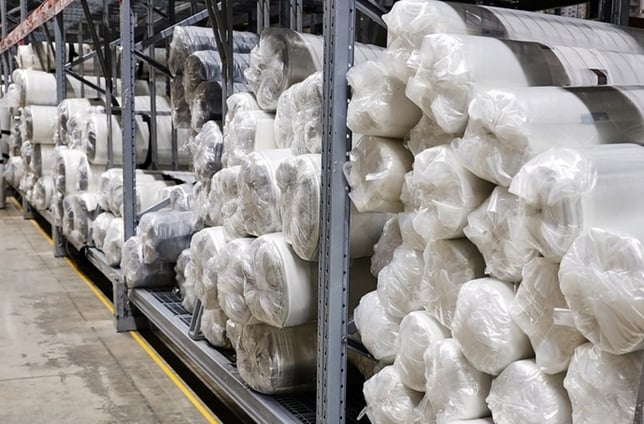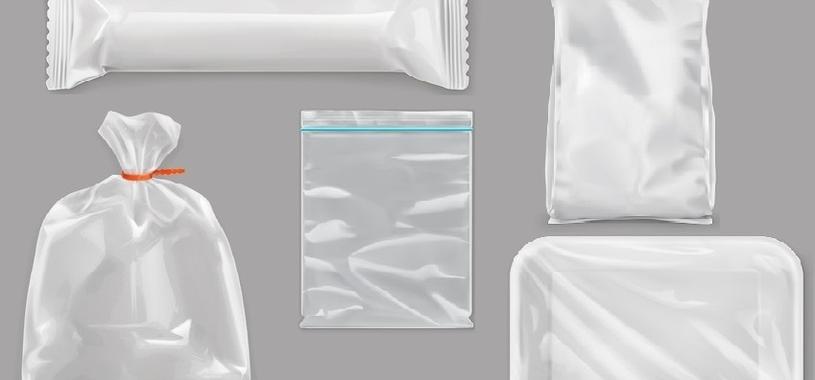Did you know that one of the major trends in packaging today is the shift by manufacturers from rigid packaging to flexible packaging? A recent report by TMR Research explains how flexible packaging allows for the customization of barrier properties, sizes, and closures. Flexible packaging is simply more…flexible.
Why Flexible Packaging?
Flexible packaging wins on many levels. It is lightweight and compact, allowing for more efficient transportation and requiring less storage space. It also uses less material, so there is a large cost benefit when compared with rigid packaging. Moreover, there are a wide variety of customization options available, which means finding the optimal packaging solution for a particular product.
 Flexible packaging requires much less storage space than rigid packaging due to its compactness.
Flexible packaging requires much less storage space than rigid packaging due to its compactness.
The TMR Research report forecasts significant growth in flexible packaging within the next few years based on the inherent benefits of flexible packaging as well as continued technological innovations in the field. The report notes that flexible packaging is widely used in the confectionery and frozen foods categories, as well as throughout the fast-moving consumer goods (FMCG) sector.
4 Major Benefits of Customization
Flexible packaging becomes even more flexible through customization. This is appealing to manufacturers when it means an improvement in the product, in the process, or in customer satisfaction.
- Shelf-Life Extension A variety of film materials can be used in flexible packaging. Individual polymers can be used such as LLDPE for fresh vegetable packaging. LLDPE allows the oxygen transfer required by fresh vegetables for optimal shelf life.Flexible packaging can also incorporate multiple materials through coextrusion or lamination using polymers, metal foils, and even paper. Incorporating ethylene vinyl alcohol (EVOH) or aluminum foil are two options for creating an excellent moisture and oxygen barrier. For products sensitive to spoilage, oxidation, or other degradation reactions, the right film is key to achieving optimal shelf life. The right packaging material can even block UV rays.
- Convenience Flexible packaging can also be customized to improve convenience—for the manufacturer or for the customer. For example, bag-in-box flexible packaging and intermediate bulk container (IBC) liners can be designed for top filling or bottom filling. In addition, holes added to IBC liner flaps can help hold the liner in place during filling. Accessories such as fill bridges and bag holders are also available to make the filling process easier. Another example of convenient design is a bag with a vertical fill spout, instead of angled, which is stronger, easier to fill, and simple to reseal.On the dispensing side, there are not only a variety of fitments available (e.g., vertical twist, horizontal twist, and press tap) but also the option of custom fitment location. Customized convenience also extends to custom sizes and designs including features such as handles and zips.
- Safety Product safety can be tightly controlled with flexible packaging. Seal strength can be adjusted through material or adhesive selection. Seal thickness can also be customized. The strength of the flexible packaging itself can be controlled through material selection. This is important to maintaining product integrity and preventing loss during transportation and handling. Moreover, tamper-evident fitments are available for flexible packaging products such as bag-in-box and IBC liners.
- Sustainability Sustainability in packaging includes the use of materials that are readily recyclable, as well as the use of less packaging overall. Another component is reducing product loss by using packaging with improved strength. This can be achieved through the material or the design. Product loss can also be reduced with innovations such as CDF’s Air-Assist IBC liners, which help expel viscous products like tomato sauce, improving the yield from 95 percent to 99.5 percent.
Customization Opportunities with CDF
CDF Corporation has a long history of innovation in flexible packaging, from accordion inserts to unique IBC liner valves. CDF’s high level of expertise and service ensure a reliable partner for custom food packaging. CDF can provide custom dimensions, materials, fitment location, lip thickness, and even venting for bag-in-box and IBC liners. As an SQF-certified facility, CDF has your food packaging needs covered. Download our corporate brochure to learn more.


